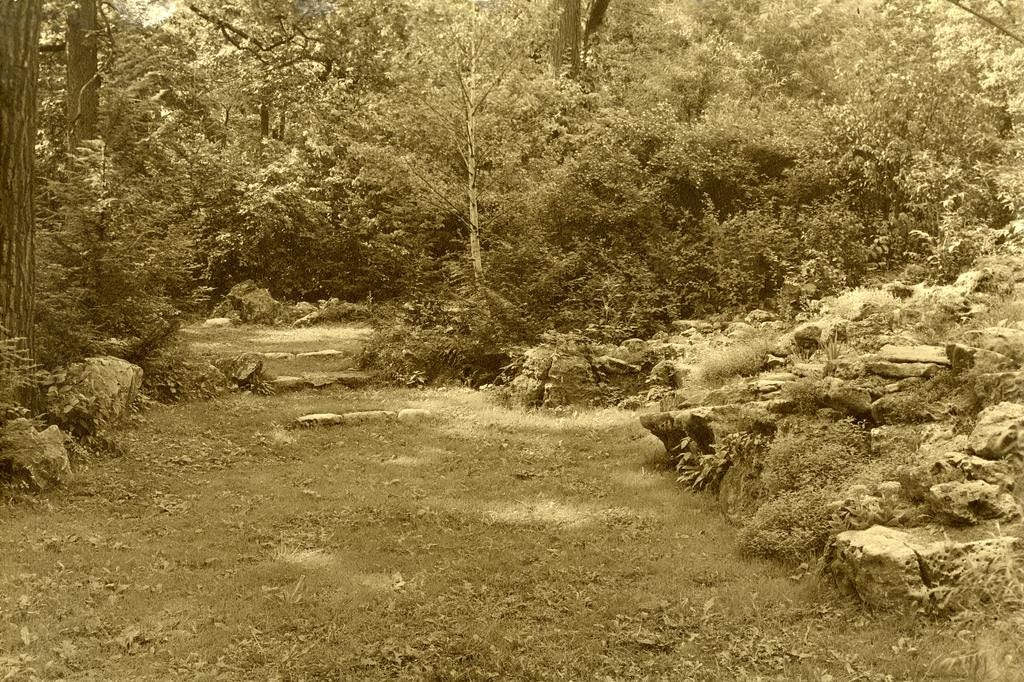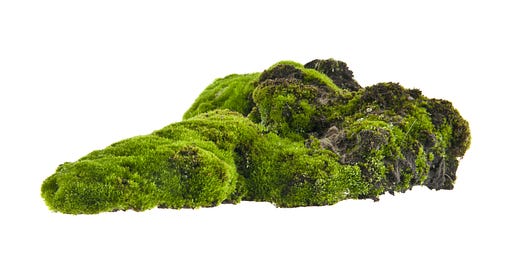As a kid, I was constantly picking up and saving interesting rocks. Colorful pebbles found amongst playground gravel, oddly shaped stones discovered on forest walks, even sea glass from ocean beaches where I also spent time collecting seashells. I didn’t typically craft or make art with these items; I preferred to enjoy them in their natural state. Turning them over and over in my fingers, memorizing each one’s unique texture. Staring into their mesmerizing colorways. I didn’t know it then, but there’s a name for natural items that humans move from one place to another (without modification): manuports.
I first came across this term in a TikTok by the_jenc, linked in this tweet.
“Manuport” appears to be most commonly used in an archeological sense, referring to “natural, unmodified objects that have been moved by people.” I think that rocks and stones moved for decorative purposes, but not carved or altered, would easily fit this definition. Learning about manuports got me thinking about how we use rocks to decorate, stabilize, and anchor gardens and outdoor spaces. I appreciate how my Grandpa, Lowell Kammerer, thought to utilize natural items beyond living plants to add beauty to spaces. Whether creating centerpieces using branches and stems instead of flowers or positioning unadulterated stones to create structure and add texture to a garden, he was often thinking about how various aspects of our environment could create interest in a landscape.
The concept of rock collecting is a familiar one to most and is arguably what led to my small mountain of captured stones when I was younger. Still, calling a transplanted object a manuport seems to imply something different. Moving a rock, not changing it or carving it, but allowing it to exist in its original form in another outdoor location, shows some amount of reverence to the rock and nature more broadly. Utilizing rocks in this way to lay the foundation for a garden, or to add character to a landscape design, seems an especially appropriate instance to label the relocated rocks “manuports.”
My grandfather often wrote about collecting, moving, and utilizing rocks throughout his gardening endeavors, both at his home (Riverby) and the Morton Arboretum.
Rock Gardens at the Morton Arboretum
Rock gardens became popular in the US during the 19th century as a way to both utilize abundant rocks and provide closer to ideal growing conditions for certain plants, namely alpine plants.
In his 1932 journal, my grandfather wrote throughout the spring months about himself and Clarence Godshalk endeavoring to create a rock garden at the Arboretum:
“Marked locations for poplars in morning and early afternoon. CEG started work on the rock garden today.” -April 14 1932
“Ordered plants for rock garden today. CEG still working on it.” -April 18 1932
“Began writing Bulletin No. 1 this AM. Collecting leafing and blooming data in PM. CEG is constructing waterfall in Rock Garden today.” -April 20 1932
“Started planting in rock garden today. Worked all day on it.” - April 22 1932
“Supervised planting in rock garden all morning, finishing most of the rough (background) work.” -April 23 1932
“Worked in rock garden all day, locating place for plantings.” - April 28 1932
“Worked in rock garden from 10 until 3:30. Planted ferns and finished placing the background shrubs.” -May 2 1932
“Worked until 3:30 in Rock Garden, practically finishing the planting.” -May 6 1932
An early issue of the Arboretum’s Bulletin of Popular Information lists shrubs appropriate for accenting a rock garden. I’m sure many of these plants were utilized in the original plantings by Grandpa Kammerer and Mr. Godshalk.
The Arboretum’s online collections feature a few photographs of the rock garden near the Thornhill building, including the one below:

Decorative Rocks at Riverby
In addition to planting the rock garden at the Arboretum, there are endless mentions throughout my grandfather’s journals of him finding, gathering, and transporting intriguing rocks from various places to his home garden at Riverby:
“Brought some small weathered rocks from the Arb this eve.” -Sept 25 1940
“Dug wild ginger and ginseng, bloodroot etc in Arb woods and picked up more rocks.” -Oct 4 1940
"ate lunch out in the Arboretum - found more moss rocks which I brought home in eve." -March 26 1946
“Brought home a large rock tonite (from near parking area north of evergreen group.)” -Sept 30 1946
“Brought home an interesting rock from the Arb - for use at the south side of pergola steps.” -March 14 1957
Even while vacationing, my grandparents often centered day trips around places to gather local flora. In a journal entry from 1945, when my grandpa was serving in the Army during WWII, my grandmother wrote about their trips to and from a natural area close to Fort Leonard Wood, MO, where he was stationed. He had placed ferns growing on rocks in a spring to flourish, gathering them later to have my grandmother bring back to Riverby - "Lowell home by 6. He got walking ferns (on rocks) from spring where he had hidden them 4 wks before.” Walking ferns, or Asplenium rhizophyllum, earned their common name from the ability to grow new plants from leaf tips that touch the ground and take root.
While rock gardens were once considered old-fashioned, according to some articles I found during research for this bulletin, they are experiencing a revival of sorts thanks to Millennials looking for lower maintenance gardens that take advantage of existing (often more vertical than flat) outdoor spaces. On behalf of all Millennials, you’re welcome for bringing rock gardens back in vogue and for promoting the magic of manuports through TikTok videos.
Thank you for subscribing! And if you’re not subscribed yet, you can do that right here
If you have topics you’re interested to hear more about or specific trees you’re interested in, please feel free to let me know in the comments
If you like what you’ve read so far, sharing Bulletin of Remarkable Trees with your friends would help a whole lot





